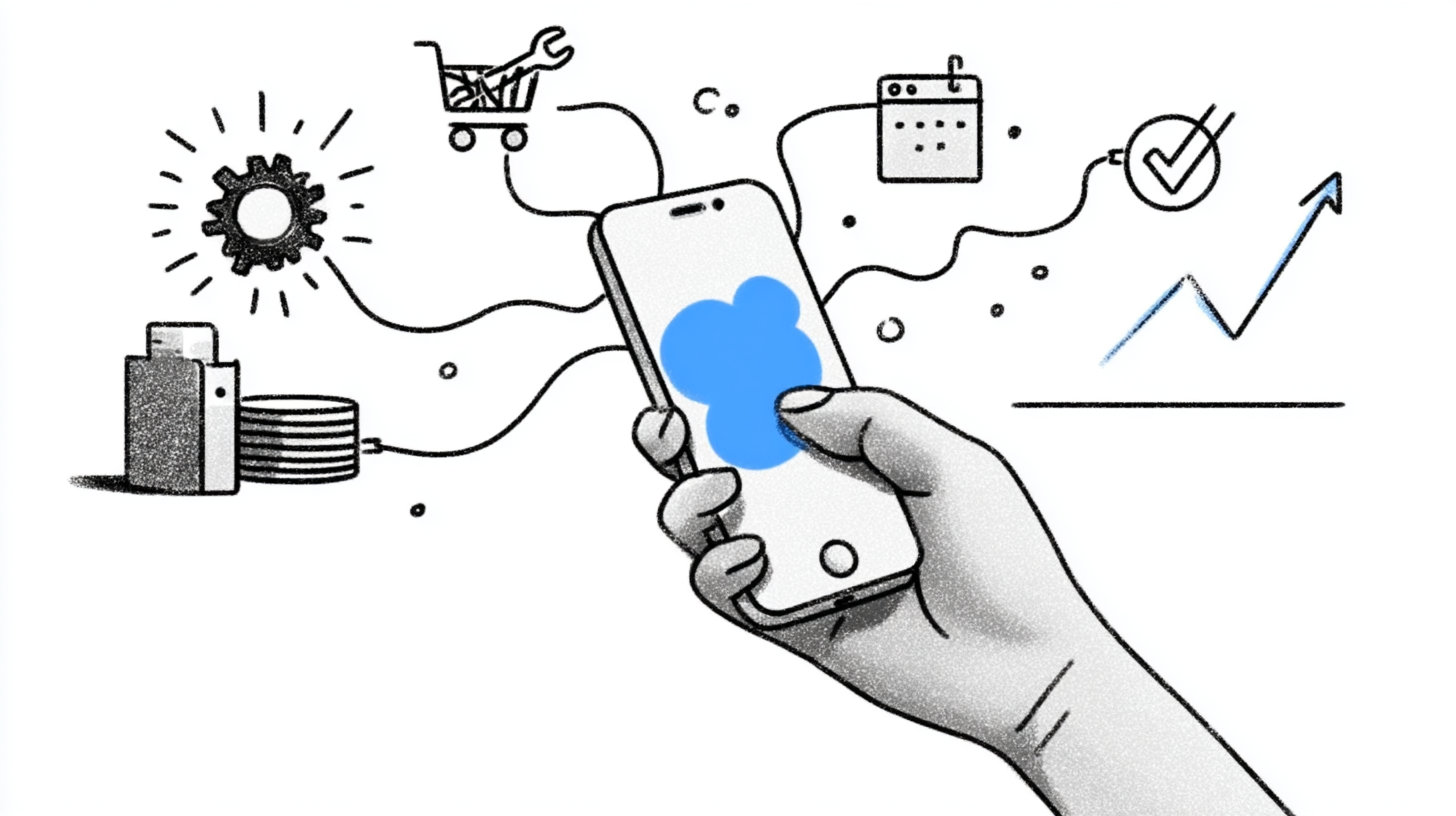If you use the Digital Product Passport wisely, you can reduce support costs and generate additional revenue without building your own app or launching new advertising channels. Read on to see how it works in this guest blog from Akeneo partner, sqanit.

Table of Contents
Keywords
The Digital Product Passport (DPP) is coming. And for many manufacturers, it initially sounds like nothing more than a cost driver: labels, software, data maintenance – additional expenses required by regulation.
But seeing the DPP only as a compliance obligation means missing out on major potential.
Yes, the Digital Product Passport costs money. In practice, most expenses fall in the lower cent range per product. QR codes cost around €0.10 to €0.15; NFC tags around €0.25 to €0.30. Including platform and license costs, you typically end up around €0.40 per device at typical volumes.
But once you place a QR code on the product, you’ve already fulfilled three of the four key conditions for effective user activation:
The missing ingredient is: useful, action-oriented content.
And this is where it’s decided whether a scan delivers only compliance or real business impact.
Every scan can create value through three different mechanisms:
The customer solves a problem without contacting support.
This lowers tickets, returns, and call center volume.
Measured by:
Even a modest deflection rate around 15% can have a large financial impact.
After scanning, users see accessories or spare parts that are guaranteed to fit their exact model. This removes uncertainty and reduces returns.
Measured by:
The scan leads directly to a service booking like maintenance, installation, upgrade and becomes more predictable
Measured by:
Formula:
(Accessory revenue + service revenue + avoided support costs) ÷ number of scans
Example
→ €3,000 total value/month → €3 per scan
Many companies make it unnecessarily hard for users to get help. Hidden contact forms, overloaded hotlines, generic chatbots …
The DPP scan turns that around by offering immediate, product-specific help right where the problem occurs.
The scan combines high intent, context, and trust.
Users want a quick fix and are willing to follow short, targeted instructions.
According to Zendesk CX Trends 2024, 51% of users prefer self-service for urgent issues.
Pro tip:
If you can identify the issue clearly, show the relevant replacement part at the end to turn a Fix flow into a Buy opportunity.
Not every purchase has to go through Amazon. Context is a conversion driver and context is automatic in a DPP scan.
Instead of browsing a generic shop, users see 3–5 highly relevant suggestions: Required accessories, wear parts, safety upgrades, etc.
Confidence in compatibility significantly boosts conversion rates and reduces returns.
It also keeps customers in your ecosystem rather than pushing them toward Amazon or third-party sellers.
Some products only deliver full value with proper installation, calibration, or regular maintenance.
The DPP scan lets you surface these needs at exactly the right moment—e.g., “Maintenance due in 12 days” or “Safety recall active.”
It converts unpredictable, reactive service requests into predictable, recurring revenue.
Pro tip:
Offer only three scheduling options:
“Later today”, “Tomorrow morning”, or “Choose a date.”
More choice slows people down.
This information changes frequently and is ideal for A/B tests and optimization.
This data must be consistent, traceable, and auditable.
A good DPP experience uses revenue data to guide action, while compliance data stays accessible in the background.
Use at least two placements.
Packaging gets thrown away; POS displays disappear; the device remains.
Show updates clearly with timestamps (“Updated 3 days ago”) to build a scanning habit.
A scan project touches nearly all central functions. Assigning clear roles like the ones outlined below helps to avoid bottlenecks:
Pro-tip:
Form a cross-functional DPP task force with shared KPIs such as scan rate, deflection, and scan-to-cart rate.
A single flow for customers, technicians, and retailers serves no one. Choose one persona and one primary goal per scan.
PDFs on mobile kill conversions. Use snackable steps, max three actions per step, plus GIFs/short videos (10–15 s).
Track with UTMs and event logs: page views, help start/completion, cart, booking confirmation.
Include mandatory fields plus revenue fields like compatibility, accessories, wear parts, warranty, recall status, error codes, media links, CTA text.
Prioritize high-ticket or high-accessory products.
Different versions for customer, technician, retailer—each with exactly one main action (Fix, Buy, or Book).
Packaging, device, POS—measure for several weeks.
Scan rate, FTF, deflection, scan-to-cart, scan-to-book, value per scan.
Add a public goal (e.g., “value/scan ≥ €3.00 within 30 days”).
The DPP may be mandatory, but it’s also one of the most powerful product touchpoints available.
Use it to reduce support costs, sell the right parts at the right time, and turn service into predictable revenue.
The magic word is context.
If the scan delivers the exact help a customer needs in that moment, you earn trust and conversion.
Start small, measure value per scan, and scale what works.
PIM provides the data, PX provides the context, and the DPP opens the door.
What you do next is execution.
Products can use standard GS1 Digital Link (QR/NFC). You can change the target of the link at any time – homepage, promotions, manuals—without recalling or relabeling products. Only requirement: mandatory DPP information must remain accessible.
This article does not replace legal advice. Only the current delegating acts and sector-specific regulations apply.
Our Akeneo Experts are here to answer all the questions you might have about our products and help you to move forward on your PX journey.
